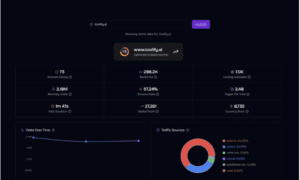The trucking market in the US is booming, currently valued at $217.3 billion in 2022. While this is not exclusive to Hotshot, it shows a healthy environment for the trucking industry. Hotshot shipping is a private vehicle transport that uses medium-sized trucks to transport vehicles. The term “hotshot” refers to the flexibility and speed it provides. It has become a trending concept in the world of individual auto transport as an alternative to regular trucking.
What Exactly Is Hotshot Shipping For Private Vehicle Transport?
Hot shot trucking hauls comparatively smaller LTL (less than truckload) loads that need to be delivered to a single customer or a location within a tight deadline. It helps people to relocate their cars urgently across state lines because of a new job or any other reason.
Apart from being an individual auto transport, Hotshot Shipping also provides custom car transport solutions to move collector cars to auctions, shows, or special events within a specific timeframe. People who require smooth door-to-door vehicle delivery choose Hotshot over traditional car shipping. Although it is similar in nature, with the drivers containing a commercial license, it is a lot faster and trustworthy.
How Much Do Hotshots Charge Per Mile?
The rates of the hot shot transport vary, but typically range from $1.50 to $2.00 per mile. If your load is heavier or time-sensitive, the price may rise up to $2.00 to $4.00 per mile. The most basic cost for partial loads is usually $1.00.
Hot shot trucking is a bit higher in cost as compared to its contemporary shipping modes. The cost of this private vehicle transport depends on a few factors, including:
- Distance between locations
- Number of vehicles to be transported
- Size and weight of the vehicle
- Timeframe for the transport delivery
- Seasonality
- Type of trailer
- Condition of the vehicle
- Dates of the shipping
- Location
- Door-to-door vehicle delivery
What Are The Additional Charges Applied During Hot Shot Shipping?
While there may not be any hidden charges, your drivers may cost an additional amount for these reasons:
- Empty Miles — Your hotshot driver may charge extra for driving without a load under “deadhead” miles.
- Cost of Fuel — Drivers consider the fluctuating price of the fuel during the trip while calculating the rates.
- Insurance and Maintenance — The cost of insurance and maintenance of the vehicle is also included in the expenses of hotshot trucking.
- Tolls and Permits — Drivers also consider the costs related to tolls and any required permits while moving between locations.
How Does Hotshot Shipping Work? A Brief Overview Of The Process
Hot shot trucking is an individual auto transport where drivers find loads through brokers or load boards and deliver the load to the specified location within a set time. It typically uses medium-duty trucks (Classes 3-5) containing gross vehicle weight ratings (GVWR) that range from 10,001 to 19,500 pounds. It provides direct, no-stop custom car transport solutions to customers. The process of hotshot shipping involves:
Booking Personal Car Shipping Service
Finding a trustworthy hotshot trucking company is the first step. Many auto transport companies provide door-to-door vehicle delivery leveraging the hotshot shipping mode. You can also take help from online platforms, such as DAT’s website. It connects the hotshot trucking companies with the shippers.
Pro Tip: Always look for companies with better ratings. The companies offering clear payment terms, competitive rates, and insurance should be preferred. The drivers should follow HOS (Hours of Service) regulations and comply with ELD (Electronic Logging Device). It shows the company is run by professionals, and your car is in safe hands.
Get A Quote From Your Company
Your company, which provides custom car transport solutions, requires a few details about your car, including:
- The model of your car
- The size of your car
- Pickup and delivery location
- Timeframe in which you want the car to be delivered
Upon specifying a few other transporting factors, such as choosing an enclosed or open transport mode or urgent delivery requirements, your company will provide you with a quote. Most reputable companies offer instant quote calculators online.
Upon receiving a quote, compare it to other car shipping companies’ quotes to review which one works better for you. Read the quote and ask the company for any exclusions (or hidden charges as well).
Book Your Transport After Finalizing The Quote
Once you receive a satisfactory quote and both parties agree to the terms, you can book the transport for shipping. You will need to provide a few details, such as your contact details and payment information.
Prepare Your Car Before Pickup And Check Thoroughly While Receiving
Before you drop your car to begin the shipping process, make sure your car has ample fuel to load and unload. Another thing to check is whether you have left any personal items inside your car. If you leave any additional items, your personal car shipping service may raise an objection during the shipping process and charge a few extra bucks. While receiving the car, always check the condition and interior of the car.
Considerations When Choosing Hot Shot Transport
More than 10.5 million out of 13.5 million trucks registered in the United States are single-unit trucks, including medium-duty trucks normally used in hot shot shipping.
This fact indicates the market is here to stay. So, if you are planning to book a hotshot transport as a personal car shipping service to relocate your vehicle, consider these factors:
- Good company reputation— It is a reputable company with good BBB ratings and feedback on different platforms
- Insurance and Safety— It must contain a license and provide insurance
- It is willing to abide by the set deadline (and has a track record of meeting deadlines)
- Door-to-door delivery— It offers picking up your car from your doorstep and delivering it to your doorstep
- Cost per mile— It offers a reasonable cost per mile.
How Long Hotshot Trucks Take to Transport a Car?
Hotshot trucks typically take 1 to 5 days to transport a car, depending on distance, route demand, and scheduling. Short hauls under 500 miles often take 1–2 days, while longer distances over 1,000 miles can take up to 5 days.





























